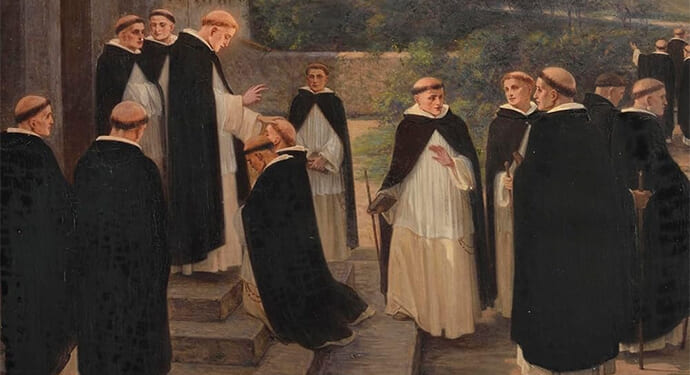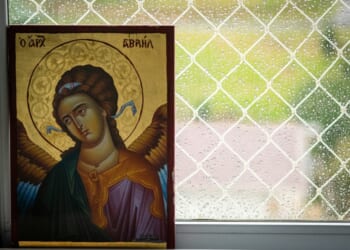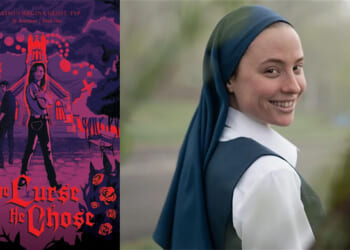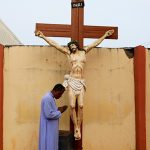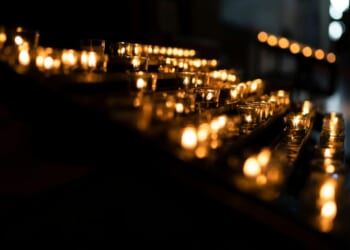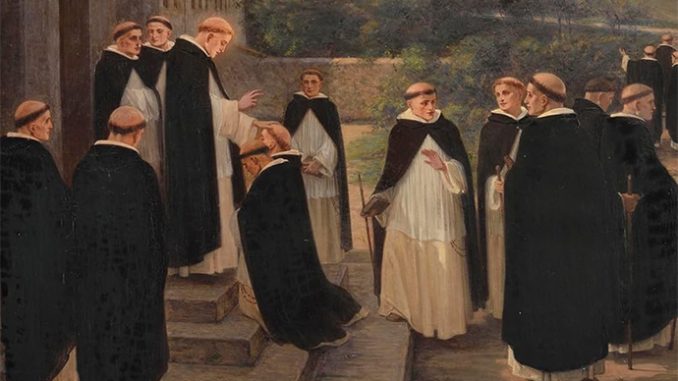
According to a 2016 directory published by Fr. José A. Martinez, the Dominicans can claim 83 canonized saints, 287 blessed, 25 venerable, and 119 servants of God in the liturgical calendar or in the files of the General Postulator of the Order of Preachers, besides another 306 martyrs who have been canonized or whose process of canonization is underway.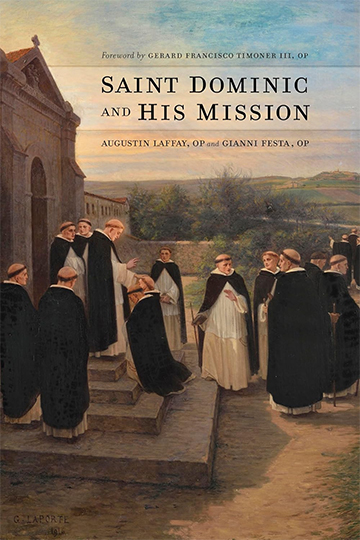
The variety of Dominican sanctity is impressive, including such diverse characters as the theologian St. Thomas Aquinas and doorkeeper St. Martin de Porres, the Doctor of the Church and mystic St. Catherine of Siena, and the wealthy aristocrat St. Dislava of Lemberk. “Nothing is less dull and repetitive than a history of Dominican sanctity,” write Augustin Laffay, OP, and Gianni Festa, OP, in their excellent new book Saint Dominic and His Mission.
Little wonder then that the Order of Preachers is not only known for its celebration of All Saints’ Day, but has set aside another feast day, November 7th, to commemorate All Saints of the Dominican Order. Yet as much as the Dominicans are celebrated now for their clarity of preaching, defense of orthodoxy, and even musical talents, most Catholics today are more likely to be familiar with Dominican saints such as St. Rose of Lima or St. Louis de Montfort than they are the man who founded the order more than 800 years ago. Laffay and Festa’s book, translated by the Dominican Sisters of Saint Cecilia, serves as a timely and helpful introduction to this somewhat overlooked saint.
A biography of St. Dominic de Guzmán is difficult in no small part because there is so little information in the historical record that comes directly from his hand. Dominic left us no spiritual memoir, no founding text for his order, nor did anyone record his preaching. The entirety of his written work transmitted to us is a mere three brief letters. Because of this, the Spanish saint did not receive a critical biography until 1957.
His parents had a reputation for sanctity, and his mother, Jane, was beatified in 1828 by Pope Gregory XIII based on continuing popular devotion to her memory. Of course, there is the renowned dream his mother experienced before she conceived Dominic, in which her son was portrayed in the form of a young dog holding a flaming torch in his mouth (appropriately, the Latin words Domini canis literally mean the Lord’s dog). Joan and her husband Felix thus consecrated their child to a priestly vocation, a decision against which Dominic never rebelled.
It is said that young Dominic learned the Gospel of Matthew and the epistles of St. Paul by heart, and that he was introduced to translations of Aristotle made in Toledo. He also met clerics instructed at the great theological schools of France and Italy. Yet Dominic was already differentiating himself from his fellow students, as when he sold his books and established an almonry where the poor could be fed. “I will not study on dead skins when men are dying of hunger,” he is reported to have declared. There is also a legend that he (unsuccessfully) offered himself as a slave to buy back the freedom of a man who had been captured by the Saracens.
Dominic was ordained a priest at the age of 24 and joined the canonry of the Cathedral of Osma, Spain. While crossing the Pyrenees during a diplomatic mission to secure a bride for crown prince Ferdinand, Dominic discovered the gnostic heresy of Albigensianism, which taught that the physical world was evil, encouraged adherents to abstain from meat and sexual intercourse, and rejected the authority of the state. In Toulouse, Dominic and his retinue were welcomed into the home of one Albigensian, whom he debated until the man was brought back to the Catholic faith. Diego de Acebo, Dominic’s bishop, identified an opportunity to systematically confront the heresy, and proposed that Dominic adopt a mendicant apostolic mission of evangelical preaching. In 1206, Acebo and Dominic established themselves at the French Monastery of Our Lady of Prouille and began publicly debating Albigensians.
These debates proved effective, and many heretics (one account says 150 people) reverted to the Catholic Church. Of the three manuscripts we possess written by Dominic, two of them concern reconciling heretics. Dominic issued penances that directly repudiated aspects of the heresy, ordering one woman to wear two crosses on the front of her clothes until she found a husband, and instructing one man to not only fast and do penance, but consume foods prohibited by the Albigensians on major feast days.
Dominic also beat the Albigensians at their own ascetic game. According to the testimony of a housewife with whom he stayed during his travels, Dominic never ate more than a small piece of fish or two egg yolks and a piece of bread, nor drank more than a cup of wine with three-quarters water. So great was his humility that he, on multiple occasions, refused selections to the episcopacy, instead preferring to live with his brethren in poverty. His methods provoked physical threats and verbal abuse from antagonistic locals, though Dominic remained undeterred.
Some recent literature places Dominic and his contemporary, St. Francis of Assisi, in tension. Jon M. Sweeney, in his 2014 book When Saint Francis Saved the Church: How a Converted Medieval Troubadour Created a Spiritual Vision for the Ages, contrasts the poverty and humility of Francis and his followers with a supposed sycophantic Dominic who pandered to the pope and promoted “doctrinaire preaching” separated from the common faithful. The above summary of Dominic’s early life is sufficient to disprove that narrative. Indeed, Francis and Dominic may have met in 1215 or 1216 while both were seeking papal endorsement for their respective missions, and there are numerous iconographic representations of a fraternal embrace between the two, indicating the bond the two groups sought to foster.
Popes were supportive of Dominic’s mission. Innocent III is reported to have had a dream in which Dominic would help save the Church. In 1218, Pope Honorius III issued a bull recommending ecclesiastical authorities assist and support “the friars of the Order of Preachers… whose useful ministry and religion we believe to be pleasing to God.” In time, Dominic would establish the headquarters of his order in Rome, though the order had also settled near the parish of Saint-Jacques in Paris, for which they were given the nickname of “Jacobins,” a name that would remain until the French Revolution of 1789, when a very different, anti-Catholic Jacobin movement would arise.
Though we do not possess any description of Dominic preaching to the crowds, we know he was an accomplished preacher who regularly reinvigorated the fervor of his brethren. His evangelistic zeal for Christians, Muslims, and others seemed unequal. His words were so moving they stirred his listeners to tears, “his heart was full of an extraordinary, almost incredible, yearning for the salvation of everyone,” writes Blessed Jordan of Saxony. “God had given him a special grace to weep for sinners and for the afflicted and oppressed; he bore their distress in the inmost shrine of his compassion.” Another first-hand account claims he spent many sleepless nights weeping and bewailing the sins of others, while his regular traveling companion William of Montferrat asserted Dominic “spent more time in prayer than in sleep.”
There were also early female adherents to Dominic’s mission, some Albigensian women joining the mendicant preachers’ ranks as early as 1206. The only other document we possess of Dominic’s is a personal letter he wrote to the sisters of a monastery in Madrid who received the habit, exhorting them to “fight the ancient adversary insistently with fasting,” and to “be not sparing of discipline and vigils.” Within a century, there were Dominican convents across Christendom.
After he died in 1221, Dominicans tried to hide the miracles associated with his relics, “for fear that it would look as if they were trying to make money out of them, under the guise of piety,” writes Jordan of Saxony. Yet reports of his holiness were impossible to hide, and he was canonized in 1234. By the beginning of the eighteenth century, there were more than twenty thousand preachers across Europe, the Americas, Asia, and Africa. Yet the French Revolution and its violent hostility towards the Church decimated the order; by the early nineteenth century, there were fewer than 3,500. Today, the number of Friars Preachers hovers around six thousand, spread over about forty provinces.
“The Dominican message is the Gospel. It is not the Order of Preachers’ property, yet the Church has entrusted the order with the Gospel as a special mission,” write Laffay and Festa. That mission has borne tremendous fruit over the last eight centuries, demonstrated by the tremendous number of its saints, and the ubiquity of its influence, manifested even in the practice of the rosary, which likely would have remained a predominantly monastic practice if not for its promotion by the Dominican Brother Alain de la Roche in the fifteenth century. It is enough that this day, as with so many other Dominican-related feasts in our liturgical calendar, we should beseech its founder.
St. Dominic, pray for us!
Saint Dominic and His Mission
by Augustin Laffay and Gianni Festa
Foreword by Gerard Francisco Timoner III
Translated by Dominican Sisters of Saint Cecilia
Catholic University of America Press, 2025
Paperback, 210 pages
If you value the news and views Catholic World Report provides, please consider donating to support our efforts. Your contribution will help us continue to make CWR available to all readers worldwide for free, without a subscription. Thank you for your generosity!
Click here for more information on donating to CWR. Click here to sign up for our newsletter.

